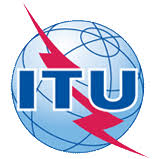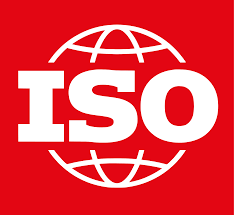Operational energy Efficiency for Users (OEU); Global KPIs for ICT Sites
Major update of definition of Technical Global KPIs for ICT Sites, data centers included.

Major update of definition of Technical Global KPIs for ICT Sites, data centers included.

Energy Consumption Measurement of Operational Technical Equipment of Copper and Optical Access

Energy Consumption Measurement of Operational Information Technology Servers

The present document describes the motivations for the standardization of technology which enables Energy Efficient IP Video Surveillance Systems over new and legacy Coaxial Infrastructures. The technology enables the transmission of both IP data and power over a single coaxial cable, and is based as much as possible on existing standards. The standardization of this technology is needed for the deployment of sustainable Video Surveillance Systems using interoperable products from different manufacturers.

The ultimate objective of this Recommendation is to enhance the sustainability of identified priority sectors in smart cities, in order to optimise economic, environmental and social benefits.Cities will decide on their digital transformation priorities. For example, cities might also want to encourage collaboration to deliver desired outcomes.This kind of engagement based on the assessment framework can incentivize industry engagement and investment.Recommendation ITU-T Y.4906 contains the following:1) Introduction of the assessment framework and its components2) Identification of indicators - Examples of categories of indicators to assist in this objective for the assessment frameworks include:- Digital infrastructure;- Digital transformation initiatives for sectors;- Collaboration efforts on digital transformation;- Economic, environmental and social benefits according to sector digital transformation.3) Sector assessment and analysis

Recommendation ITU-T Y.4905 is a holistic impact framework for the assessment of smart and sustainable cities to address the effects of digital innovation on social, economic and environmental issues. Smart sustainable city (SSC) initiatives have been proposed as potential solutions to economic, social and environmental challenges and pressures encountered by cities. Advances in information and communication technologies (ICTs) enable significant transformation potential in the way city resources, services and infrastructures are planned and managed. More specifically, ICT can play an enabling role to address the urban challenges of the twenty-first century. Smart sustainable cities harness ICTs (including various subtopics under ICT such as digital transformation, data, Internet of things (IoT), digital services, etc.) and intend to deliver city enhancements through a portfolio of action items. By their very nature, SSC initiatives impact the underlying cities. It is important to identify and asses this impact. The identification and assessment of impact will allow for better planning, the setting expectations with stakeholders, better informed budgeting, more effective public private partnerships and the promotion of alternative financing mechanisms. This will also help in communicating SSC initiatives.

ISO 37153:2017 provides the basis, requirements and guidance for a maturity model for the assessment of technical performance, process and interoperability of community infrastructure(s) as well as its contribution to the community, and guidance for future improvements. This document is applicable to a) all types of community infrastructure, including, but not limited to, energy, water, transportation, waste and ICT, b) single types of community infrastructure or multiple types of community infrastructure, and c) all types of communities, regardless of geographical locations, size, economic structure, stage of economic development, and d) all applicable stages of infrastructure life cycle (e.g. planning/design, construction, operation, decommission).NOTE Utilization of natural systems, such as green infrastructure, is also considered as one type of infrastructure

ISO/TR 37152:2016 outlines the basic concept of a common framework for the development and operation of smart community infrastructures. The framework describes the planning, development, operation and maintenance methodology to facilitate the harmonization of each infrastructure as a part of a smart community and ensures that the interactions between multiple infrastructures are well orchestrated.
The framework is applicable to all processes of smart community infrastructures' life cycle (from conceptual design through planning, development, operation, maintenance, redevelopment and feedback). The infrastructures to be covered are energy, water, transportation, waste management, ICT and others.
The framework can be adopted by all relevant stakeholders who are engaged in planning, development and operation of smart community infrastructures, including planners, developers, business operators and suppliers. The framework is intended to cover the processes in which these stakeholders are engaged, such as management, organizational structure, analyses and design methods, and documentations.

ISO 37101:2016 establishes requirements for a management system for sustainable development in communities, including cities, using a holistic approach, with a view to ensuring consistency with the sustainable development policy of communities. The intended outcomes of a management system for sustainable development in communities include: (a) managing sustainability and fostering smartness and resilience in communities, while taking into account the territorial boundaries to which it applies; (b) improving the contribution of communities to sustainable development outcomes; (c) assessing the performance of communities in progressing towards sustainable development outcomes and the level of smartness and of resilience that they have achieved; (d) fulfilling compliance obligations. ISO 37101:2016 is intended to help communities become more resilient, smart and sustainable, through the implementation of strategies, programmes, projects, plans and services, and demonstrate and communicate their achievements. ISO 37101:2016 is intended to be implemented by an organization designated by a community to establish the organizational framework and to provide the resources necessary to support the management of environmental, economic and social performance outcomes.

This work item will define guidance to the providers and standard makers to ensure that each service component is provided with the information needed by the user to make an informed choice.

This work item will define guidance to the user in order to build his/her own service composition with the expected and relevant quality of experience (QoE) and to ensure his/her data privacy

The production of a taxonomy of all disability, ageing and youth issues that could be addressed by UCI based systems and relating these to requirements for elements in the UCI additional information field and to PUA functionality. The work will include liaison with groups representing young, elderly and disabled people and with the eEurope Smartcard initiative.
